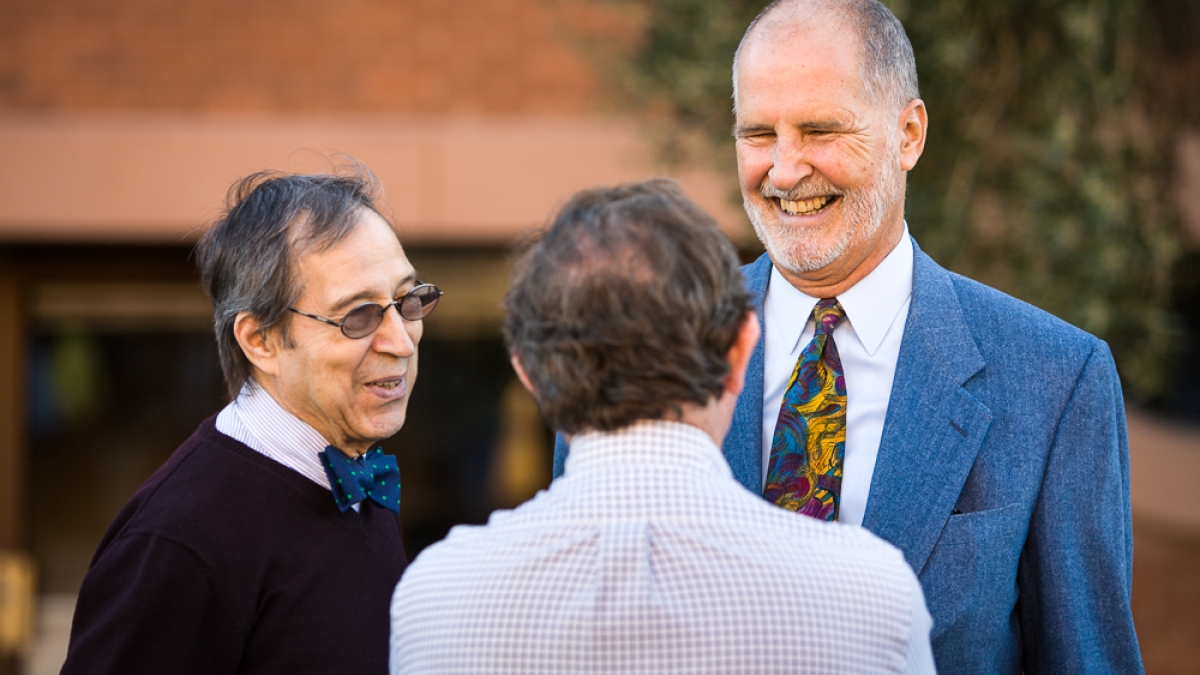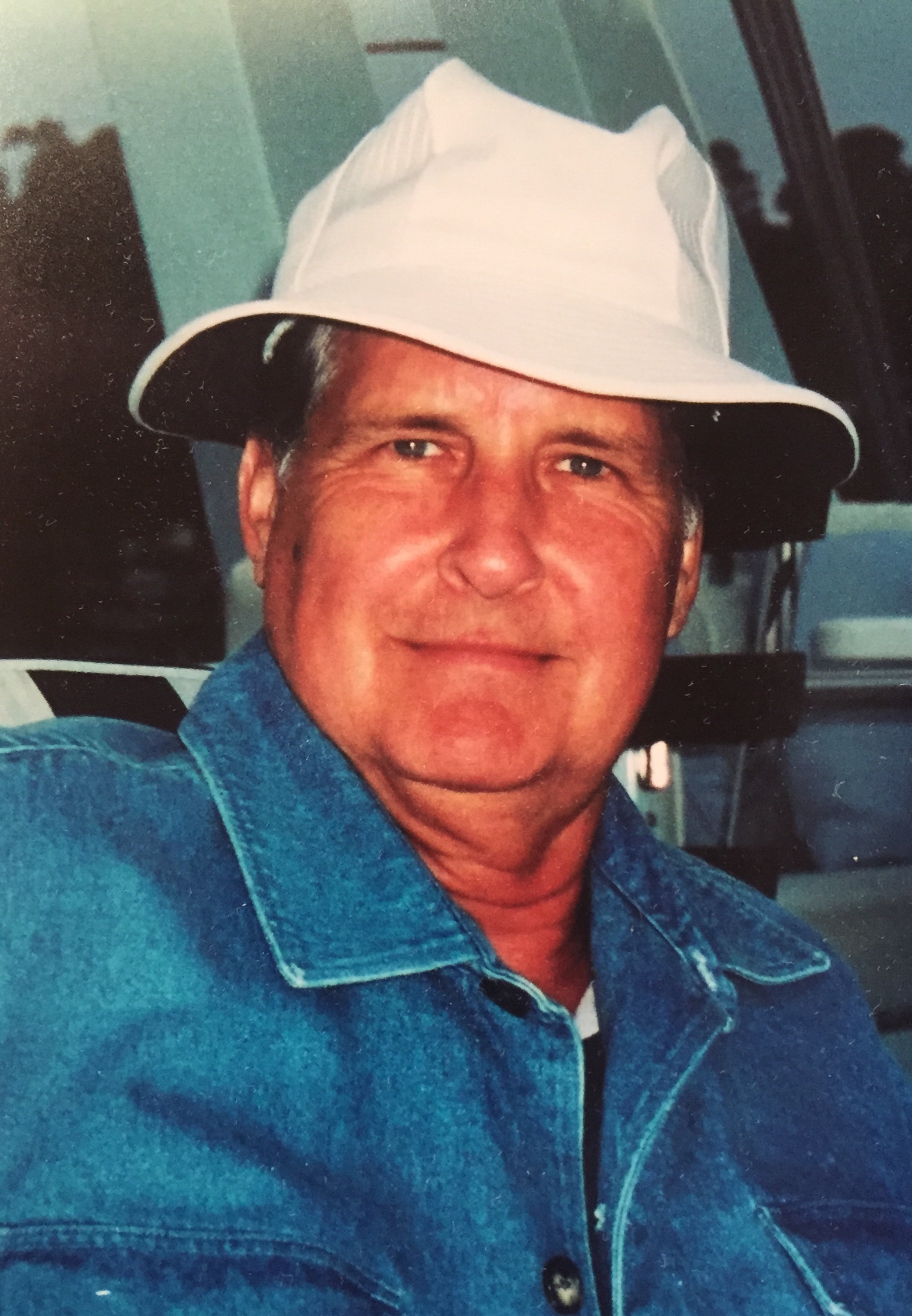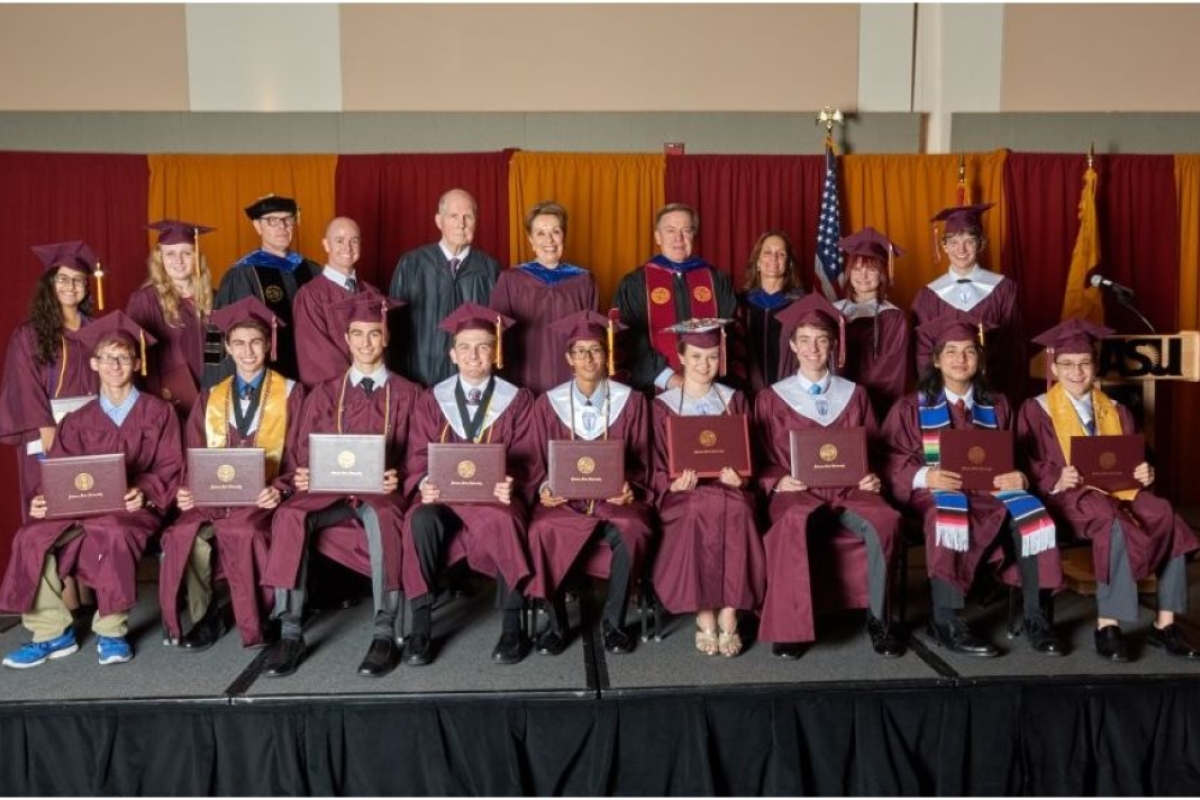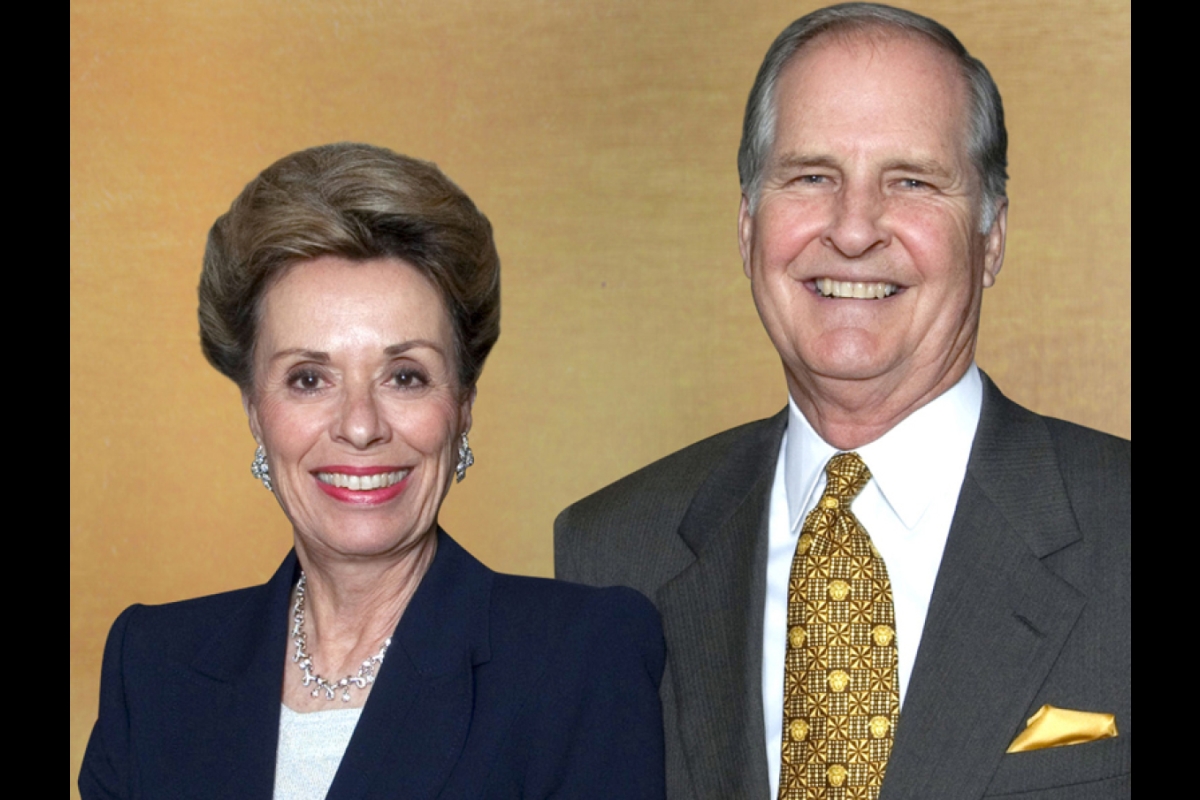Editor's note: This story is being highlighted in ASU Now's year in review. To read more top stories from 2017, click here.
He was an architect, one of the last to apprentice under Frank Lloyd Wright.
He was a businessman, head of Herberger Enterprises, a real estate development firm.
And he was a philanthropist, once described by a sitting governor as “a living example of what Henry David Thoreau meant when he said, ‘If you give money, spend yourself with it.’”
Gary K. Herberger, one of Arizona State University’s most generous supporters, died Feb. 28, his wife, Jeanne Herberger, said. He was 79.
Gary K. Herberger
One of Herberger's most significant legacies is his namesake Gary K. Herberger Young Scholars Academy, a school for academically gifted children at ASU’s West campus. Gary and Jeanne Herberger donated $20 million to launch the school in 2011 and added $5 million to expand the campus this year.
Such donations are synonymous with the Herberger family name, which has for decades been one of the most visible in the Phoenix area — especially within the ASU community. The family’s first donation to the school came in 1962: $200 to the School of Music. Over the years, that grew to more than $40 million in support, including a $12 million gift in 2000 that started the transformation of the School of Fine Arts into the Herberger Institute for Design and the Arts.
ASU President Michael Crow said Herberger had a sweeping impact.
“Gary had an extraordinary intellect that was wide-ranging and effortlessly curious about how to design things better, how to make things better,” he said. “He was totally committed to upgrading the intellectual capability of the community. His legacy here at ASU and around the Valley will be felt for generations to come.”
Steven Tepper, dean of the Herberger Institute for Design and the Arts, said that Gary Herberger is a “patron saint” of the college and that his creative genius inspires students and faculty every day.
“As an architect, developer and inventor, Gary embodied the true spirit of a designer — someone who sees the world as an endless space for reinvention and imagination,” Tepper said.
“Gary and the Herberger family invested in the Institute because they believed in the power of architecture, design and the arts to advance and elevate Phoenix as a sustainable and culturally rich city,” he said, adding that the support has allowed the college to hire renowned faculty and directors and to fund research and innovation in design, digital culture, performing arts, film and art.
Herberger knew architecture firsthand, having worked under Wright in 1958 at Taliesin West in Scottsdale and helping him with New York City’s Guggenheim Museum. When Wright died in 1959, Herberger traveled to Kansas to finish the famed architect’s buildings at Wichita State University. Herberger later served as chairman of the Frank Lloyd Wright Foundation.
“As an architect, developer and inventor, Gary embodied the true spirit of a designer — someone who sees the world as an endless space for reinvention and imagination.”
— Steven Tepper, dean of the Herberger Institute for Design and the Arts
Tepper recalled visiting Gary and Jeanne Herberger in their Paradise Valley home.
“Gary designed every detail of that house — from the exterior structure to the kitchen cabinets, the chandeliers, the tables and bookshelves. I remember thinking, ‘How wonderful to be able to live in a house where everything — small and large — was a reflection of one’s own creative talents and hard work,’ ” he said.
“This is the spirit of craftsmanship, intelligence and creativity that Gary brought to everything he did and that we aspire to when preparing the next generation of designers and artists.”
Herberger was a private person, but in 2007 then-Gov. Janet Napolitano declared May 16 of that year as Gary Kierland Herberger Day. Her proclamation included the famous Thoreau quote. Napolitano also noted the many interests that benefited from Herberger’s devotion: adoption, health, theater, art, music, senior citizens, environmental concerns, population issues, hunger, homelessness, youth, education, architecture and academic excellence.
ASU also has recognized the generosity of Gary and Jeanne Herberger, who shared his passion for advancing the school. In 2012, the couple was selected “ASU Philanthropists of the Year” by the President’s Club of the ASU Foundation for A New American University.
Herberger often visited ASU and his Young Scholars Academy, which teaches an accelerated curriculum to middle and high school students that allows them to acquire credits from the university.
He was passionate about creating a safe space for gifted children to thrive and said of the academy: “I dream of a place where our most promising children can realize their true potential — a place where they can play, create, inspire and innovate.”
Herberger loved being with the students, said Kimberly Lansdowne, executive director of the academy. During his visits, they would often hold “jam sessions” around the baby grand piano in the lobby that he donated.
“The kids would stand up and do a dance or a song, or poetry or play the guitar,” Lansdowne said.
The Herbergers “hoped for us to be a place where highly gifted kids could come and learn and be in a safe environment to take risks and be innovative and creative and be OK with struggling with things and experiencing failure and what you learn from that,” she said.
Though his name is on the school, the gracious and soft-spoken Herberger was never intimidating, she said.
“He would always greet me with a hug,” she said. “When he came to visit he was quiet, but you could see he was pleased with all the things that were going on.”
Lansdowne said Herberger had been a brilliant student who wasn’t always comfortable in the classroom.
“Academically, he knew more than most of his instructors,” she said. “But he struggled with finding a place where he felt comfortable learning and valued as a student.”
Gary and Jeanne Herberger were intellectual partners who embraced lifelong learning. Jeanne Herberger eventually earned three degrees from ASU’s Hugh Downs School of Human Communication.
In 2002, Gary and Jeanne Herberger were awarded honorary degrees from Thunderbird, The American Graduate School of International Management, as it was known then. Gary Herberger had been on the Thunderbird Board of Trustees. In 2015, ASU partnered with the school, now known as the Thunderbird School of Global Management.
He was a member emeritus of the American Institute of Architects, a member and former president of the Economic Club of Phoenix, and former chairman of the Dean's Council of 100 at Arizona State University.
Herberger was on the boards of the Design School and the Council for Design Excellence and was involved in the creation of the Herberger Center for Design Research, which has been a conduit for several million dollars in research funding over the past 20 years.
He supported research for the Digital Phoenix Project and was an adviser for the creation of ASU’s Master of Real Estate Development program in the W. P. Carey School of Business.
Gary and Jeanne Herberger also made significant donations to the Phoenix Symphony, Musical Instrument Museum and Herberger Theater Center.
Gary Herberger’s parents, Bob and Katherine “Kax” Herberger, moved the family from Minnesota to the Valley in 1949. Bob Herberger’s family owned the Herberger’s chain of department stores in the Midwest. Since then, few families have had as profound of an impact on ASU and the Phoenix area.
Gary Herberger is survived by his beloved wife and his brother, Judd.
Lansdowne said the children at the Gary K. Herberger Young Scholars Academy are his legacy.
“What they will do in their lives,” she said, “will reflect back on the generosity of Gary.”
Top photo: Gary Herberger speaks to a group of patrons at the launch of the Herberger Institute for Design and the Arts in 2009. Photo by Tom Story/ASU
More Arts, humanities and education

Local traffic boxes get a colorful makeover
A team of Arizona State University students recently helped transform bland, beige traffic boxes in Chandler into colorful works of public art. “It’s amazing,” said ASU student Sarai…

2 ASU professors, alumnus named 2025 Guggenheim Fellows
Two Arizona State University professors and a university alumnus have been named 2025 Guggenheim Fellows.Regents Professor Sir Jonathan Bate, English Professor of Practice Larissa Fasthorse and…

No argument: ASU-led project improves high school students' writing skills
Students in the freshman English class at Phoenix Trevor G. Browne High School often pop the question to teacher Rocio Rivas.No, not that one.This one:“How is this going to help me?”When Rivas…






